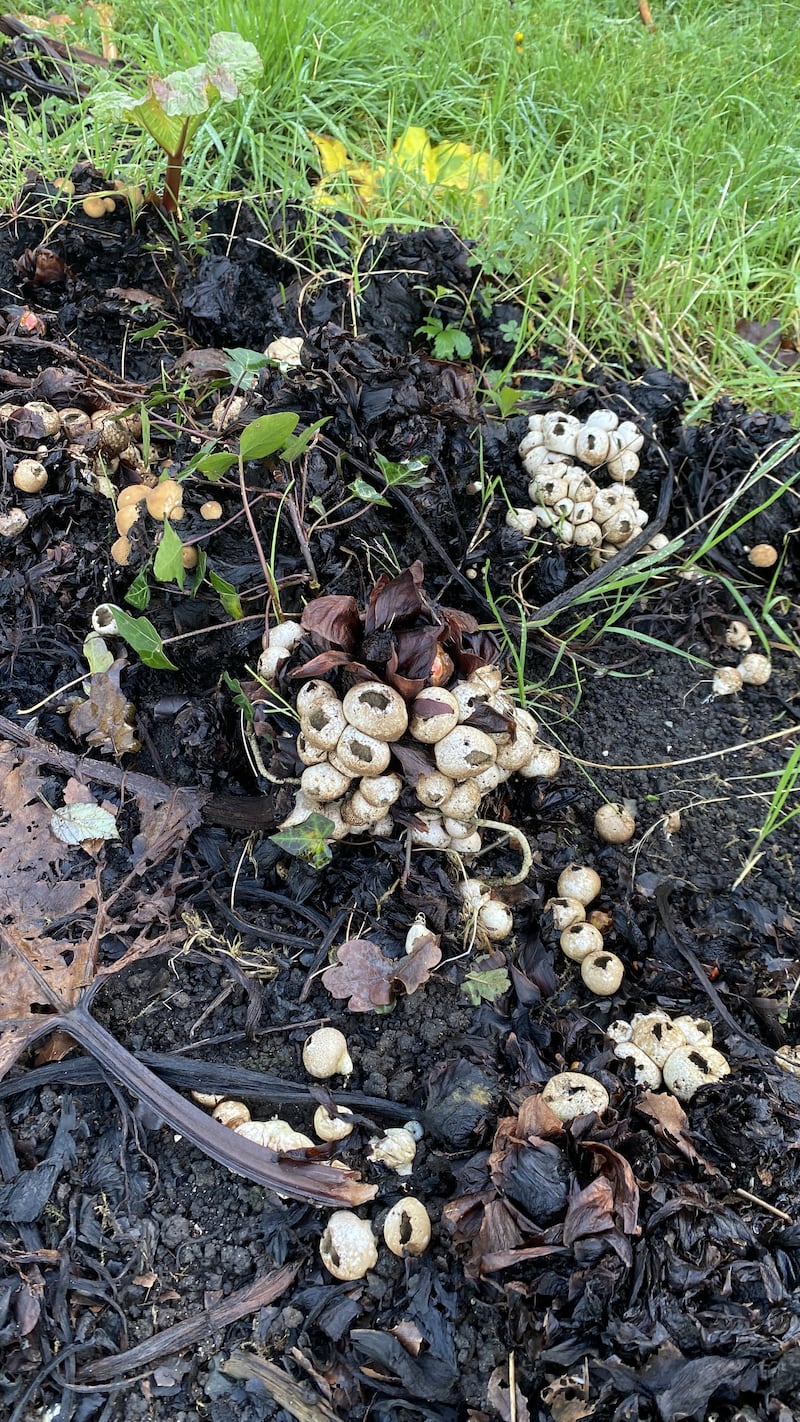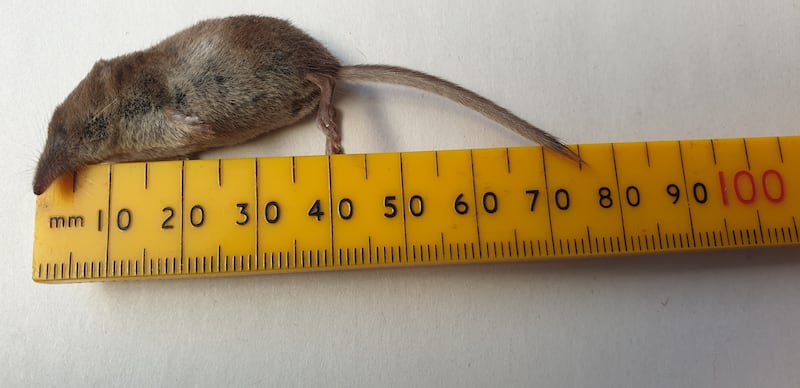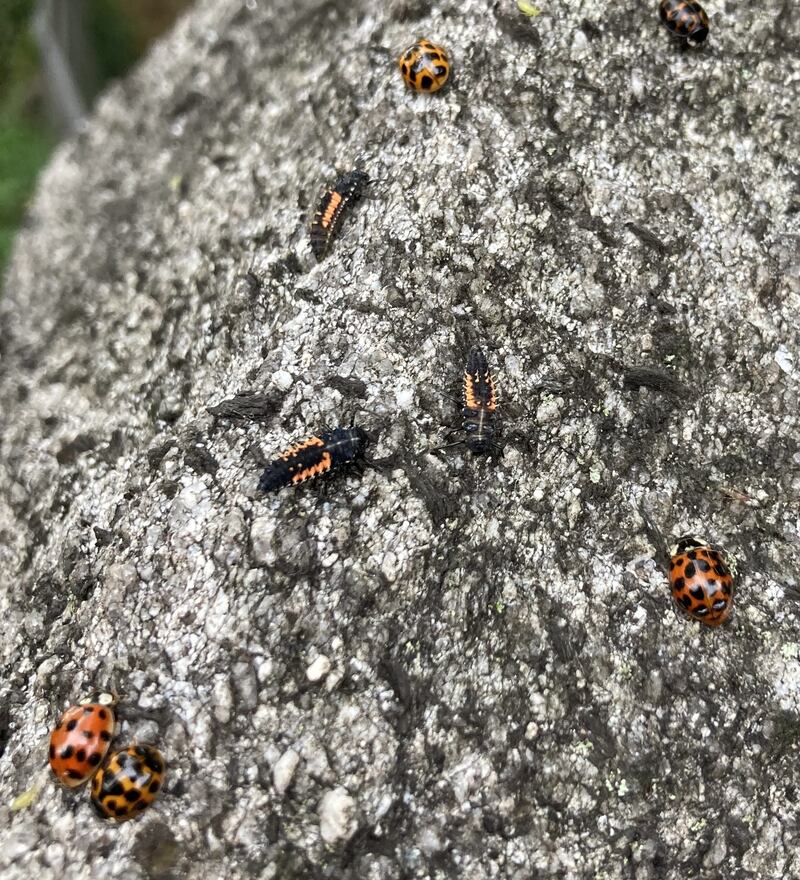I noticed several of these jelly-like blobs in the hills above Omeath, Co Louth. What are they exactly? — Adrian O’Hare

This is known as star jelly and was thought to fall to Earth from stars during a meteor shower. Needless to say, this is nonsense. They are the glands of the oviducts of frogs, left uneaten by frog predators, so they must taste truly terrible. On exposure to moisture, they swell up, burst and decompose into masses of jelly.
I spotted this beautiful butterfly while out walking my dog in November. I have never seen a butterfly at this time of year before. — Kate Travers, Hannon, Co Dublin
It is a red admiral, an annual migrant that arrives from southern Europe in June. It breeds continuously all summer and has no over-wintering stage here. It doesn’t go into hibernation, so the cold of winter usually finishes it off. It was exceptionally warm last November, which is why they were still on the wing then.
RM Block
I came across these small puffballs on a rhubarb stool. A cloud was emitted when touched. — Richard Dwyer, Co Kilkenny

Yes, these are puffballs (Lycoperdon pyriforme), which grow in swarms on rotten buried wood under the rhubarb stool. When ripe the whole insides turn to spores, millions of which are emitted in clouds whenever they are touched.
I have never seen a pygmy shrew before but I think this is one. Found on a patio this morning; I presume that some predator lost either its supper or its breakfast! — Henry Saville, Lisburn, Co Antrim

It is indeed a pygmy shrew — our smallest mammal. It most likely was killed by a cat which while they love chasing and killing such creatures, find them distasteful because of their potent scent glands. They often bring dead shrews home as a present for their owner.
While on a walk we found these ladybugs and those strange, black bugs on a granite rock. What are they? — Hugo O’Shaughnessy, Co Dublin

I presume you were walking in Ireland and not America because here they are called ladybirds. These are the invasive harlequin ladybirds, both adults and black larval young with orange spots.
- Please submit your nature query, observation, or photo with a location, via irishtimes.com/eyeonnature


















